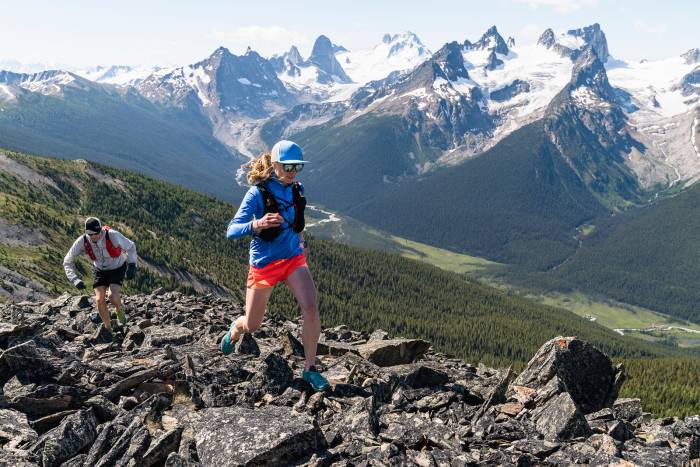ASICS came up with a novel proving ground for its GlideRide running shoes: the Bonneville Salt Flats. Reporter Brian Metzler put them to the test in this surreal environment.
I have to admit I was still a bit sleepy and in no mood to go for a run when I boarded a bus in Salt Lake City at 3:30 a.m. with 30 other runners from around the world.
But by the time the bus rolled into Bonneville Salt Flats about 2 hours later, copious amounts of caffeine and the excitement of wear-testing the yet-to-be-released ASICS GlideRide running shoes had fully kicked in. I buzzed with energy.
Speed demons have set numerous land speed records on the Bonneville Salt Flats (think super-powered motorcycles and jet-assisted dragsters). But ASICS wasn’t trying to make this wear-testing session a race or even a super-fast run. Instead, this was going to be an exercise in efficiency based on each runner’s current fitness level.
The idea was to put runners in an environment where there would be no physical distractions — not even an official course, just a flat, smooth surface for as far as the eye can see — so they could just focus on the rhythm of running.
Over the years, I’ve tried out a lot of running shoes before they hit stores — somewhere around 1,500, I think. But I had never run on an entirely flat, seemingly endless surface like the Salt Flats before.
The GlideRide, with 2 years of R&D from the ASICS Institute of Sports Science behind it, had been touted as a shoe geared for maximum efficiency and comfort. So this was going to be interesting and fun, even if novel and a bit obscure.
“The GlideRide is all about being able to run longer, easier,” said A.J. Andrassy, ASICS global director of performance running footwear.
“We wanted to create a wear-testing event that, if we removed all of the distractions of running with no end in sight, how far could you run at a given pace? The GlideRide is all about efficiency, so we wanted to remove all of the other variables and distractions to allow runners to run as efficiently as possible.”
ASICS GlideRide Review
The key aspect of the GlideRide ($160), which debuts online and at stores across the U.S. on September 27, is a curved (or rockered) midsole design with a very stiff demeanor that helps reduce energy loss at the ankle joint and the forefoot during every stride cycle.
In that way, it shares some similarities with other innovative shoes that have hit the market in recent years, including the Nike Vaporfly 4%, Nike ZoomX Vaporfly NEXT%, HOKA Carbon X, and HOKA Carbon Rocket. But unlike those shoes, the GlideRide doesn’t have a carbon-fiber plate.















